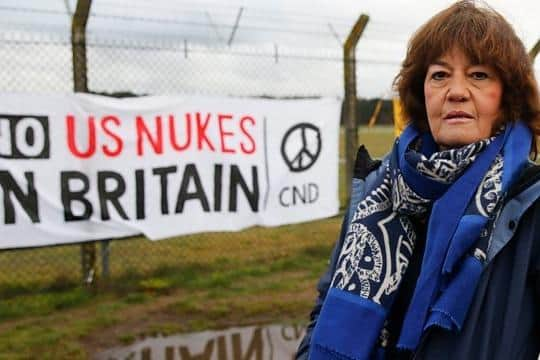Nuclear Armageddon: How Close Are We?
and live on Freeview channel 276
When clocks around the world struck midnight on January 1, signalling the start of 2024, many people were full of optimism for what the next 12 months might bring.
However, in light of the global hardships, wars in Ukraine and the Middle East, disease and climate change, others were already fearing the worst.
Advertisement
Hide AdAdvertisement
Hide AdLater this month, the world will find out where the hands of the Doomsday Clock – a marker for the peril our planet could face – will be set.


The Doomsday Clock was created in 1947 by the Bulletin of Atomic Scientists, a non-profit group founded by Albert Einstein and University of Chicago scientists, to warn humanity of the dangers of nuclear war.
It was originally set at seven minutes to midnight, with midnight being the theoretical point of annihilation and ‘doomsday’ itself.
“When the clock is at midnight, that means there’s been some sort of nuclear exchange or catastrophic climate change that’s wiped out humanity,” explains Rachel Bronson, CEO of the Bulletin of Atomic Scientists. “We never really want to get there and we won’t know it when we do.”
Advertisement
Hide AdAdvertisement
Hide AdSince its introduction, the Doomsday Clock has since been set backward eight times and forward 17 times, and in 2023 it stood at the closest its ever been – at just 90 seconds to midnight.
The BAS board stated that the war in Ukraine had raised profound questions on how nations interact, as well as an apparent downfall in international conduct.
“Russia’s thinly veiled threats to use nuclear weapons remind the world that escalation of the conflict – by accident, intention, or miscalculation – is a terrible risk,” it said.
“The war’s effects are not limited to an increase in nuclear danger; they also undermine global efforts to combat climate change,” said the statement.
Advertisement
Hide AdAdvertisement
Hide AdThe other threats mentioned last year included climate change, biological threats and disruptive technologies. A pandemic, the board added, is no longer a once-in-a-lifetime risk.
Panorama’s senior foreign affairs correspondent Jane Corbin has covered the world’s major conflicts and investigated the proliferation of nuclear weapons over the past three decades.
In this in-depth report for This World, the 69-year-old journalist visits the home of Robert Oppenheimer’s Manhattan Project in New Mexico which was responsible for the development and testing of the nuclear weapons dropped on Hiroshima and Nagasaki in August, 1945.
She then travels to Scotland to reveal the strategy behind Britain’s nuclear deterrent and the Trident nuclear system which they would “consider using only in extreme circumstances of self-defence, including the defence of our NATO allies”.
Advertisement
Hide AdAdvertisement
Hide AdFinally, Jane speaks to campaigners in Suffolk fighting against a new generation of American weapons they fear will be based on UK soil.
RAF Lakenheath has been controlled by the US Air Force since 1948 and is home to its 48th Fighter Wing, consisting of more than 4,000 military personnel and 1,500 civilians.
The Campaign for Nuclear Disarmament (CND) believes the proposed development works there are in preparation for stationing nuclear weapons – another move which could have a negative effect on the metaphorical Doomsday Clock, not to mention the reality of what is happening in the world.